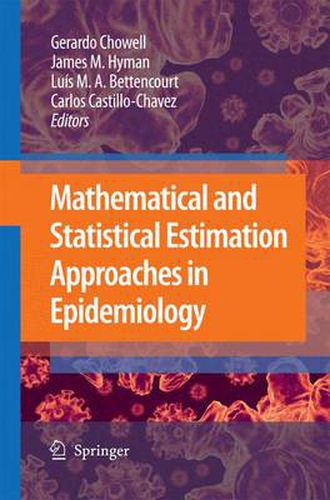Readings Newsletter
Become a Readings Member to make your shopping experience even easier.
Sign in or sign up for free!
You’re not far away from qualifying for FREE standard shipping within Australia
You’ve qualified for FREE standard shipping within Australia
The cart is loading…






This title is printed to order. This book may have been self-published. If so, we cannot guarantee the quality of the content. In the main most books will have gone through the editing process however some may not. We therefore suggest that you be aware of this before ordering this book. If in doubt check either the author or publisher’s details as we are unable to accept any returns unless they are faulty. Please contact us if you have any questions.
Mathematical and Statistical Estimation Approaches in Epidemiology compiles t- oretical and practical contributions of experts in the analysis of infectious disease epidemics in a single volume. Recent collections have focused in the analyses and simulation of deterministic and stochastic models whose aim is to identify and rank epidemiological and social mechanisms responsible for disease transmission. The contributions in this volume focus on the connections between models and disease data with emphasis on the application of mathematical and statistical approaches that quantify model and data uncertainty. The book is aimed at public health experts, applied mathematicians and sci- tists in the life and social sciences, particularly graduate or advanced undergraduate students, who are interested not only in building and connecting models to data but also in applying and developing methods that quantify uncertainty in the context of infectious diseases. Chowell and Brauer open this volume with an overview of the classical disease transmission models of Kermack-McKendrick including extensions that account for increased levels of epidemiological heterogeneity. Their theoretical tour is followed by the introduction of a simple methodology for the estimation of, the basic reproduction number,R . The use of this methodology 0 is illustrated, using regional data for 1918-1919 and 1968 in uenza pandemics.
$9.00 standard shipping within Australia
FREE standard shipping within Australia for orders over $100.00
Express & International shipping calculated at checkout
This title is printed to order. This book may have been self-published. If so, we cannot guarantee the quality of the content. In the main most books will have gone through the editing process however some may not. We therefore suggest that you be aware of this before ordering this book. If in doubt check either the author or publisher’s details as we are unable to accept any returns unless they are faulty. Please contact us if you have any questions.
Mathematical and Statistical Estimation Approaches in Epidemiology compiles t- oretical and practical contributions of experts in the analysis of infectious disease epidemics in a single volume. Recent collections have focused in the analyses and simulation of deterministic and stochastic models whose aim is to identify and rank epidemiological and social mechanisms responsible for disease transmission. The contributions in this volume focus on the connections between models and disease data with emphasis on the application of mathematical and statistical approaches that quantify model and data uncertainty. The book is aimed at public health experts, applied mathematicians and sci- tists in the life and social sciences, particularly graduate or advanced undergraduate students, who are interested not only in building and connecting models to data but also in applying and developing methods that quantify uncertainty in the context of infectious diseases. Chowell and Brauer open this volume with an overview of the classical disease transmission models of Kermack-McKendrick including extensions that account for increased levels of epidemiological heterogeneity. Their theoretical tour is followed by the introduction of a simple methodology for the estimation of, the basic reproduction number,R . The use of this methodology 0 is illustrated, using regional data for 1918-1919 and 1968 in uenza pandemics.